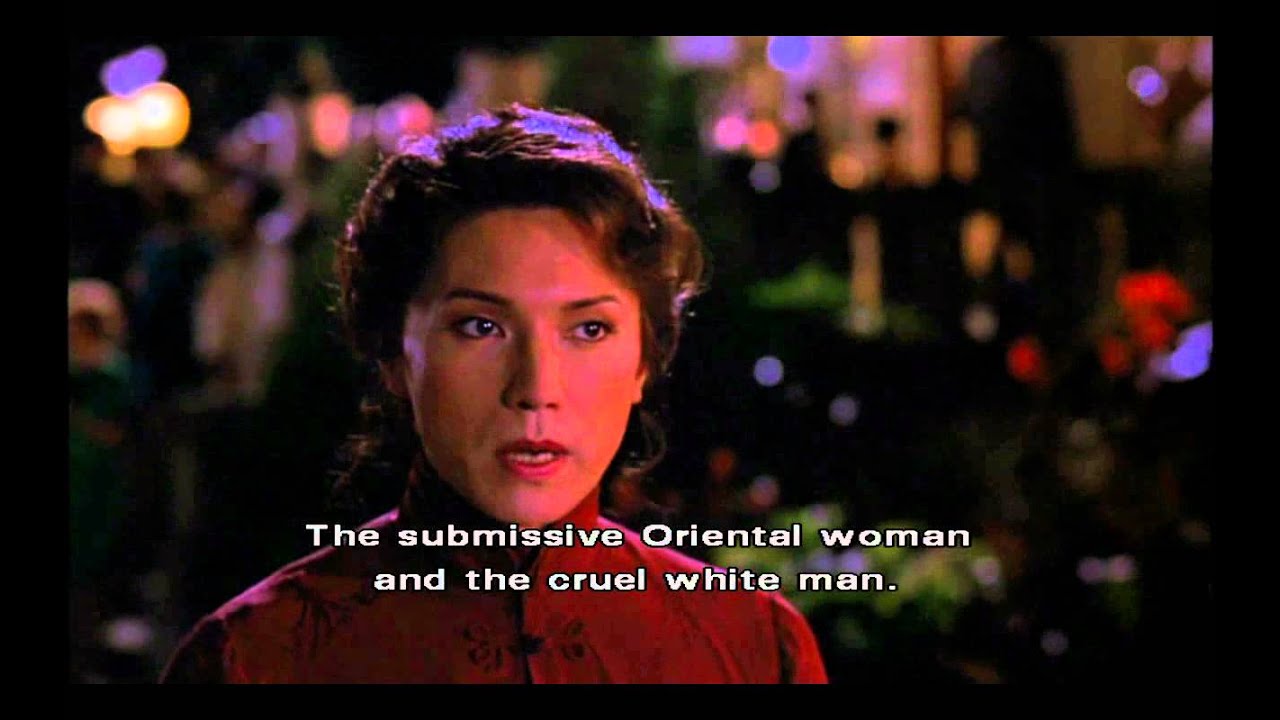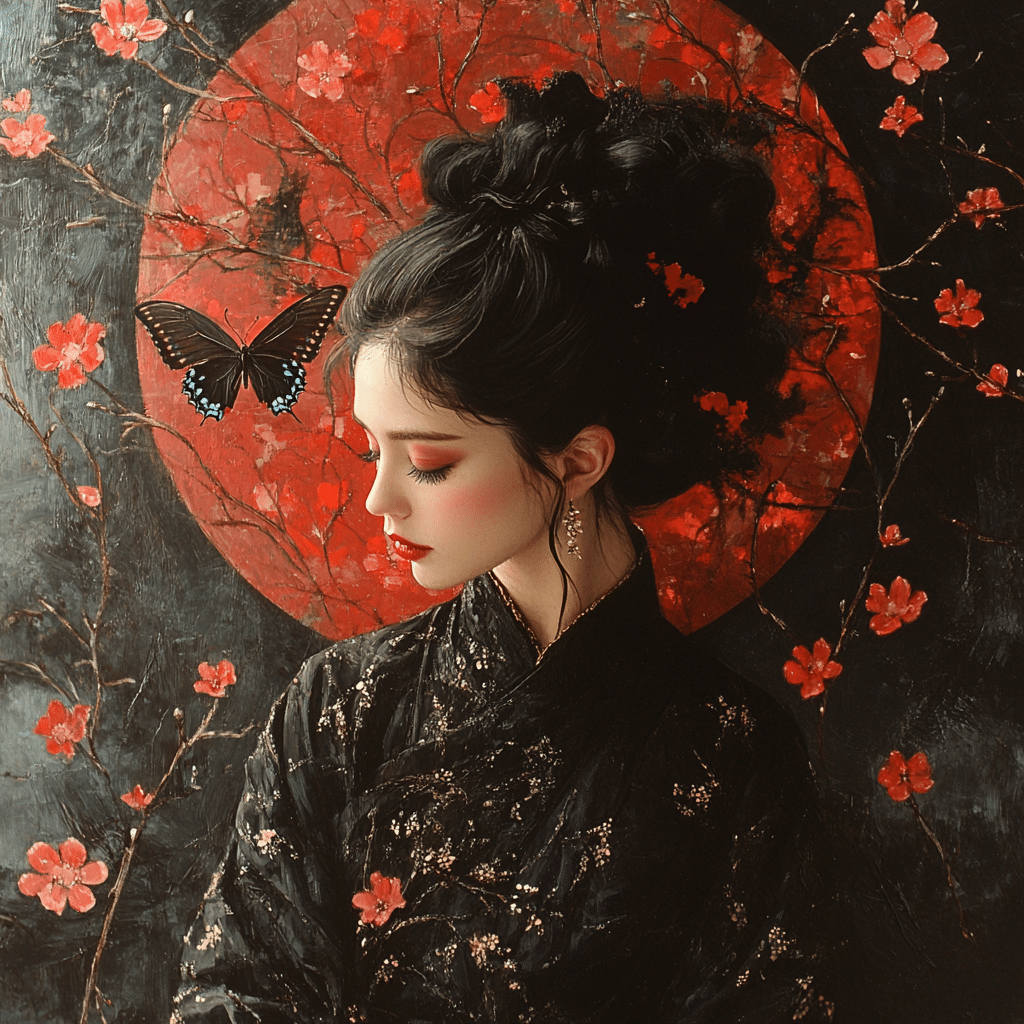
1. The Core Narrative: Unpacking m butterfly’s Complex Storyline
m butterfly tells the story of René Gallimard, a French diplomat who finds himself enmeshed in a twenty-year-long affair with Song Liling, a captivating Chinese opera singer. This relationship, however, spirals into a life-altering deception—Song is a male spy who skillfully masquerades as a woman. Set against the backdrop of the Cultural Revolution in 1960s China, the narrative dances around themes of identity, love, and betrayal, examining how fantasy and reality often blur. At its core, m butterfly flips the script on perception, poking holes in the veneer of romantic dalliances while exposing the fragility of both personal and cultural identities.
Gallimard, caught in his own web of fantasies, sees himself as the male figure in Puccini’s opera, Madame Butterfly, while idealizing Song as his butterfly. Yet, the haunting twist is that Gallimard ultimately realizes he is indeed the butterfly, trapped in the cage of his illusions. Through this profound narrative, m butterfly unravels the delicate threads of deception, ranging from personal relationships to broader societal constructs, paving the way for a rich exploration of gender and sexual dynamics.
The play’s emotional pulse lies in its ability to provoke thought about love’s illusions. For Gallimard, love is intertwined with power and sorrow, reflecting a journey from admiration to disillusionment. As the layers peel back, audiences witness the emotional depths of betrayal—an intricate tale that transcends cultural barriers and explores universal truths, making it resonate with anyone who’s had their heart played like a finely-tuned instrument.

2. Thematic Resonance: How m butterfly Echoes Across Cultures
Themes in m butterfly resonate powerfully across various cultures and artistic expressions. Much like the emotional upheaval in “Salt to the Sea,” which dives into the experiences of refugees during World War II, m butterfly evokes a profound sense of longing and heartache. Hwang’s insights on identity and representation mirror the poignant struggles highlighted in literature, such as Jhumpa Lahiri’s “The Namesake,” where characters grapple with their dual identities in a world that often overlooks them.
Importantly, m butterfly isn’t just a tale of love—it’s a commentary on perception and misunderstandings that leap across cultural divides. The chasm between Eastern and Western identities serves as a backdrop for Gallimard and Song’s tumultuous relationship. The deeper Hwang plunges into these themes, the more the narrative resonates with audiences today—where simplistic portrayals often fail to capture the complexity of human experience.
The story’s impact extends beyond mere entertainment; it invites discussions essential for our time. As people grapple with questions of belonging and identity amidst an ever-grappling global landscape, m butterfly serves as timely fodder for conversation. Whether in a modern theater setting or a casual group discussion, pushing past the surface to explore the wounds and triumphs becomes an unforgettable journey.

3. The Cottage Broadway’s Revival: Revisiting a Theatrical Classic
The revival of m butterfly at The Cottage Broadway has breathed fresh air into Hwang’s iconic play, attracting both seasoned theatergoers and curious newcomers. This staging is a mesmerizing rendition that revisits the raw intensity of love and betrayal while illuminating the cultural nuances at its core. With innovative direction and a stellar cast, the revival reinvigorates the dialogue, challenging audiences to reflect on the socio-political context of the narrative.
Modern theater is not just an art form; it’s a mirror reflecting societal changes. Through m butterfly, the revival showcases how theater evolves alongside our cultural conversations—diversity, gender dynamics, and cross-cultural relationships take the spotlight. It’s remarkable how Hwang’s work now ignites discussions relevant to today’s audience, stimulating thoughts on authenticity in love and identity in an interconnected world.
Moreover, the revival emphasizes Hwang’s politically charged dialogue, steeping it in contemporary relevance. There’s something potent about witnessing impactful representation on stage, especially as it grapples with themes of power and vulnerability. This fresh take on m butterfly ensures its status as a theatrical classic, captivating audiences and leaving them yearning to dive deeper into the layers of its narrative.

4. Love and Deception: The Psychological Dynamics at Play
At its heart, m butterfly is a riveting exploration of deception—on personal and societal levels. The dynamic between Gallimard and Song mirrors the psychological concepts of identity and self-presentation posited by theorists like Erving Goffman. Each character dons a mask, navigating through a world where perception often eclipses reality. This poignant examination leads audiences to confront their own self-deceptions and the facades they maintain in daily life.
Gallimard’s unwavering belief in Song’s fabricated identity showcases the power dynamics often intertwined in relationships. Love can become a place where imagination reigns supreme, and it raises the question: how many of us live in a state of illusion when it comes to love? The dance between admiration and betrayal offers a psychological insight into dependency and desire’s often unsettling nature.
Ultimately, m butterfly’s characters serve as harbingers of love’s potential downfall. Their entangled lives invite viewers to reflect on the psychological intricacies of human connections, where love isn’t merely a straightforward journey but a landscape littered with deceptions and desires. The psychological themes embedded within the narrative challenge us to rethink our desires, constructing a deeper understanding of relational disarray.

5. Cultural Critique: m butterfly’s Commentary on East and West
Hwang’s m butterfly stands as a critical reflection of the longstanding dichotomy between Eastern and Western cultures. By crafting Shi Pei Pu, a multi-dimensional character, Hwang dismantles the often one-dimensional portrayals of Asian femininity. Rather than merely a victim, Shi becomes an active player in the romantic ruse that ultimately traps both characters in a labyrinth of their making.
This cultural critique serves as a relevant lens through which we must scrutinize modern relationships, particularly in a globalized world. The implications of misrepresentation affect real lives, proving that love—though universal—still grapples with challenges tied to identity and perception. As cross-cultural relationships become increasingly common, Hwang’s work shines a light on the misunderstandings and complexities that can arise.
In today’s world, where dialogues about representation gain momentum, m butterfly poses significant questions about authenticity and identity. By navigating the cultural sea of misunderstandings, the story reminds us to approach love and relationships with mindfulness—an examination of our stereotypes and assumptions can often reveal deeper truths hidden beneath the surface.
6. Societal Reflection: m butterfly in the Context of 2024
As we step into 2024, conversations surrounding authenticity and cultural representation have never been more relevant. m butterfly remains a significant piece of art that reflects ongoing discussions about gender identity, sexual orientation, and power dynamics within relationships. This narrative has grown more profound as various movements advocate for inclusivity and challenge societal norms.
The psychological and cultural lenses through which Hwang’s characters interact resonate powerfully today. Themes rooted in m butterfly echo within contemporary media consumption, pushing audiences to engage with the evolving nature of love and identity. This exploration of self versus societal expectations invites reflection on our personal narratives, encouraging a cultivation of empathy in a world rife with disparity.
m butterfly embodies a timeless lesson: love, while beautiful, carries an inherent complexity that interlinks human relationships and societal frameworks. By examining the nuances of m butterfly, audiences are left not only entertained but enlightened, fostering discussions that are necessary for navigating the intricacies of modern connectivity in our global society.
An Everlasting Impact: m butterfly’s Legacy in Modern Theatre
m butterfly’s legacy extends far beyond its initial performances; it continues to adapt and resonate through various cultural lenses. As society changes, so does the interpretation of Hwang’s masterpiece, reflecting evolving norms and expectations in love, identity, and cultural representation. This ever-expanding dialogue encourages audiences to confront their own experiences and biases, ensuring that the play remains fresh and relevant.
Powerful storytelling lingers long after the curtain falls, much like the haunting echoes of operatic gestures that mark the play’s conclusion. The themes of betrayal and the struggle for identity fundamentally challenge audiences to engage with their emotions and the societal frameworks governing their relationships. Engaging with m butterfly is about unraveling the connections between characters and understanding the larger metaphors they embody.
Ultimately, m butterfly stands not just as a theatrical triumph but also as a vital piece of our cultural discourse. As it continues to captivate and challenge audiences, it proves that love, tinged with betrayal, is a narrative that is as compelling as it is necessary. Thus, this masterpiece leaves an indelible mark, reminding us of the intricacies that intertwine love with the broader experience of navigating our world—a tapestry of connections that transcends time, place, and culture.
m butterfly Trivia: Love, Betrayal, and Surprising Facts
A Tale with Real Roots
Did you know that m butterfly is based on an actual high-profile scandal? The play, written by David Henry Hwang, is inspired by the true story of Bernard Boursicot and Shi Pei Pu, who had a tumultuous relationship that defied cultural boundaries. This gripping narrative explores themes of deception and obsession, much like how characters in films such as House at The End Of The Street portray twisted relationships. It’s this intricate blend of fact and fiction that captivates audiences and keeps them on the edge of their seats!
Roles and Relevance
One of the standout performances in m butterfly has been delivered by Tatoo Cardinal, known for her strong roles in various productions. Cardinal’s rich experience in the industry complements the play’s exploration of identity and betrayal, giving life to a character that resonates deeply with audiences. Interestingly, Jason Gedrick, often associated with captivating stories in cinema, brings a similar intensity to his roles, highlighting how actors shape narratives. It’s fascinating to think about how these performances impact our understanding of love—sometimes all-consuming and wrapped in secrets.
Cultural Reflections and Beyond
The allure of m butterfly can also be examined through modern lenses, reflecting on changing perceptions much like the art of short nail Designs which has evolved into a fashion statement today. The play doesn’t just entertain; it challenges societal norms and invites conversation. As for adaptations, the interplay of cultures reminds us of stories like that of Vito spatafores in The Sopranos, showcasing the conflict between love and loyalty. In a similar vein, the storyline makes one ponder the implications of trust—what happens when it’s betrayed?
By delving into such themes, m butterfly not only captivates but leaves us contemplating profound questions about love, identity, and the masks we wear. From its unexpected parallels with various elements of pop culture to its grounding in reality, it truly is a tale painted with the broad strokes of human experience.

What is the story behind the M. Butterfly?
M. Butterfly tells the story of Rene Gallimard, a French diplomat who falls for Song Liling, a Chinese opera singer. Their romance, spanning two decades, unravels when Gallimard discovers that Song is actually a male spy who deceived him into believing he was a woman.
What is the difference between M. Butterfly and Madame Butterfly?
M. Butterfly differs from Madame Butterfly mainly through its perspective and twist. While Madame Butterfly focuses on a tragic love story between a Japanese woman and an American officer, M. Butterfly flips the narrative, exploring themes of deception and identity within a same-sex relationship.
What does the ending of M. Butterfly mean?
The ending of M. Butterfly shows Gallimard realizing he’s the butterfly, not Song, as he sacrifices himself for love. This operatic gesture mirrors the tragic death in Madame Butterfly, symbolizing both betrayal and self-discovery.
What type of butterfly is the M?
In the context of butterflies, M. can refer to various species, but it’s more associated with the play’s theme rather than a specific type. Butterflies like the Monarch would fit neatly in butterfly discussions, though.
What is the myth behind the butterfly?
The myth behind butterflies often symbolizes transformation and the duality of nature. In literature and art, butterflies are often seen as messengers of love or change, reflecting deeper emotional states and transitions.
Is M. Butterfly a tragedy?
Yes, M. Butterfly is considered a tragedy. It delves into themes of love, betrayal, and identity, leading to a heartbreaking conclusion that highlights the fragility of human relationships.
What is the true story of Madame Butterfly?
Madame Butterfly is actually a fictional opera by Giacomo Puccini, telling the story of Cio-Cio San, a Japanese woman who falls in love with an American naval officer, embodying themes of love and sacrifice.
What is the theme of M. Butterfly?
The theme of M. Butterfly centers on love and the consequences of illusion and betrayal. It explores how perception can distort reality, leading to tragic outcomes when people are not who they seem.
What is the demise of Madame Butterfly?
In Madame Butterfly, the demise of Cio-Cio San is marked by her tragic suicide upon realizing that her American husband has abandoned her, emphasizing themes of sacrifice and heartbreak.
What is the conflict in M. Butterfly?
The conflict in M. Butterfly revolves around issues of identity, cultural differences, and the contrasts between appearance and reality, leading to personal and political tensions between Gallimard and Song.
Is Madama Butterfly appropriate for kids?
Madame Butterfly isn’t typically considered appropriate for young kids due to its heavy themes of love, abandonment, and suicide, which might be too complex or emotional for them.
Who is Renee in M. Butterfly?
Rene, or Rene Gallimard in M. Butterfly, is a French diplomat who struggles with his own insecurities and desires. His infatuation with Song drives the narrative and reveals his inner conflicts throughout the story.
What is the difference between Madame butterfly and M Butterfly?
Apart from the differences in narrative perspective and themes, M. Butterfly expands on Madame Butterfly by introducing a male protagonist and a complex, layered relationship wrought with deception and exploration of gender identity.
What does M stand for in M Butterfly?
The “M” in M. Butterfly stands for “Mister,” highlighting the male aspect of the relationship and the themes of masculinity and femininity explored in the play.
What is M Butterfly based on?
M. Butterfly is based on the true story of the relationship between French diplomat Bernard Boursicot and Chinese opera singer Shi Pei Pu, blending fictional elements with real-life events to explore perception and deception.
What is another name for Madame Butterfly?
Another name for Madame Butterfly is Cio-Cio San, which is the name of the main character in the opera. This title represents her identity and journey within the story.
What is the movie M. Butterfly about?
The movie M. Butterfly is an adaptation of the play, focusing on the same themes of love, identity, and betrayal through the complicated relationship between Gallimard and Song.
Is Madame Butterfly a good opera for beginners?
Madame Butterfly can be a good starting opera for beginners because its emotional story, beautiful music, and dramatic themes make it engaging, though its tragic elements might be worth noting for first-time viewers.
How many versions of Madame Butterfly are there?
There are numerous adaptations and interpretations of Madame Butterfly, ranging from the original opera to films, musical versions, and even modern retellings, making it a frequently revisited story in various art forms.
What is the true story of Madame Butterfly?
The true story of Madame Butterfly revolves around the character Cio-Cio San, a young Japanese girl who falls in love with an American sailor, reflecting the cultural disconnects of their worlds and her ultimate tragedy.
What is the story behind the butterfly effect movie?
The Butterfly Effect movie explores the idea that small actions can lead to significant consequences, centered on a young man who discovers he can travel back in time, impacting his life and the lives of those around him in unexpected ways.
What is the butterfly story about?
The butterfly story often symbolizes change and beauty, reflecting themes of transformation and the fleeting nature of life, mirroring personal journeys and emotional growth throughout literature and folklore.
What is the conflict in M. Butterfly?
The conflict in M. Butterfly largely hinges on themes of identity and deception. Gallimard’s journey pushes him to confront his understanding of love and self as he navigates a relationship built on a foundation of lies.
















